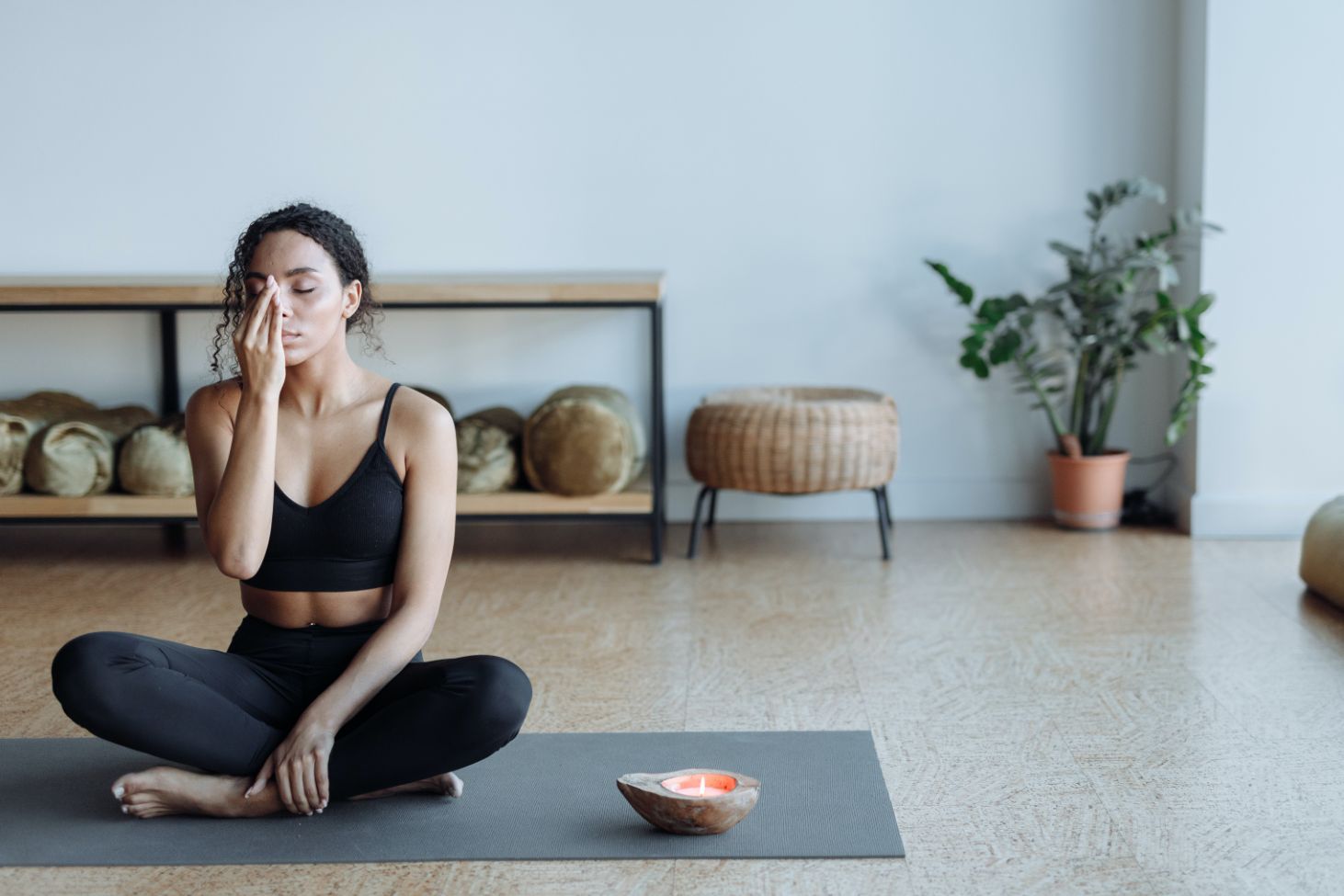Has anyone ever told you to “take a deep breath” to calm down? If you just brushed it off, you may want to think twice. There’s more truth behind this statement than most people realize.
Slow, deep breathing is proven to activate the parasympathetic nervous system, lowering our stress levels and blood pressure while helping us to relax and digest.
While we know that breathing techniques are beneficial for reducing anxiety and stress, did you know that they might even help your posture?
Back problems affect over 80 percent of the adult population, meaning that proper posture is something we should all care about.
Years of repetitive slouching not only wears away at your spine – it also makes you more prone to injury.

Correcting your posture may be as easy as breathing. Here’s how belly breathing from the diaphragm benefits posture.
But first, what is the diaphragm, anyway?
What (and Where) is the Diaphragm?
The diaphragm, a large muscle that helps to control breathing, is located just below the ribcage.
As you breathe, it moves up and down, allowing air to pass through it and into the lungs.
When it comes to comparing belly breathing vs. chest breathing, the diaphragm allows for deep, efficient breathing. Chest breathing, on the other hand, is a different story.
The intercostal muscles, located between the ribs, lift the ribcage up and out any time we breathe. However, these muscles activate more intensely during chest breathing than belly breathing.

Image via https://step1.medbullets.com/respiratory/117007/muscles-of-respiration
This action not only requires more effort than belly breathing, it results in a more shallow breath.
Diaphragmatic breathing, on the other hand, fully utilizes the capacity of the lungs. But how does this relate to posture?
Belly Breathing vs. Chest Breathing for Posture
It’s strange to think that our breathing might play a role in our posture (until you understand the difference between postural and phasic muscles, that is).
Phasic muscles are designed for fast movement and usually come in pairs. Think biceps and triceps, here. These muscles consist of fast-twitch fibers that provide a significant, powerful force for a short duration.
Although phasic muscles are powerful, they fatigue rather quickly and are more anaerobic when compared to postural muscles.
Postural muscles lie deep within the abdomen, back, and pelvis. They act as the trunk of the body, keeping everything held together and stable.
Postural muscles aren’t activated as often as they used to be thanks to modern activities like slouching in an office chair or hunching over a desk.
As a result, these muscles begin to weaken over time just like any other muscle does when not utilized regularly.

Image via https://image.slideserve.com/400191/postural-muscles-that-shorten-under-stress-l.jpg
Working out these postural muscles helps to strengthen them which, in turn, helps to build and maintain good posture.
Research from 2018 suggests that exercising postural muscles deep in the body not only increases breathing capacity but improves the body’s alignment.
The best way to exercise postural muscles? Utilizing belly breathing in place of chest breathing whenever possible.
Deep breathing causes the diaphragm to contract. Over time, this strengthens both the diaphragm and lungs while stabilizing the spine, lengthening your posture.

Moreover, in the battle between belly breathing vs. chest breathing, belly breathing comes out on top for reducing stress and anxiety.
Belly breathing reduces cortisol, a stress hormone, by placing us in a state of relaxation. This is proven to help us relax and enter a restorative state.
Before we dive into the details of how you can practice belly breathing in your daily routine, let’s first touch on why poor posture and chest breathing go hand in hand.
The Link Between Shortness of Breath and Poor Posture
Chest breathing limits your access to postural muscles deep within the body. You’ll have to work harder to get the proper oxygen intake, causing fast, shallow breathing.
Shallow breathing causes too much carbon dioxide to expel from the blood, changing your blood chemistry.
From here, your body sets a new carbon dioxide threshold. When you reach this threshold, you’ll breathe even faster than you actually need to.
This places the body into fight or flight mode, causing everything to shift into overdrive and work harder than necessary.
The sensation of shortness of breath follows, followed by poor posture, which in turn worsens shortness of breath. It’s a tough pattern to correct.@somnifix Babies breathe properly, adults don’t! 👶 #breathwork #diaphragmaticbreathing #bellybreathing #airwayhealth #learnontiktok #didyouknowfacts ♬ original sound - Somnifix
Learning to breathe appropriately not only improves our breathing and posture, but our state of mind.
So how do you begin making the switch to correct this problem?
Making the Switch From Chest Breathing to Belly Breathing
Belly breathing requires you to think of breathing as a 360-degree movement rather than something that only happens from the front of the body outward.
Your back muscles are involved in diaphragmatic breathing, too. Think of everything moving outward all around the body like an expanding ball.
When you first try belly breathing, you may want to lie on your back rather than standing.

Place one hand on your chest with the other just below the ribcage where the diaphragm is located.
You can also place an object over the diaphragm instead (like a pillow) to visually see the correct movement as you breathe.
From here, breathe in slowly through the nose. Your stomach should move outward, causing the bottom hand (or object) to rise. Your top hand should remain still.
Tighten the stomach muscles as you exhale, causing the bottom hand to lower. Again, the hand placed on your chest should remain as still as possible.

We were designed to use both nasal breathing and diaphragmatic breathing together as the default breathing method, but many of us are chest and mouth breathers.
If you aren’t used to nasal breathing or can’t breathe in and out of the nose due to congestion, try Buteyko breathing exercises to decongest.
Once you begin to put nasal breathing into practice during waking hours, ensure that you’re nasal breathing at night to prevent snoring and fragmented sleep.
Practice Belly Breathing At Night
Many sleep disorders are tied to airway blockages caused by dysfunctional breathing.
Mouth breathing not only causes chest breathing and heightened stress, it leads to snoring that interferes with quality sleep and leaves you fatigued in the morning.
Activate your parasympathetic nervous system before bed by practicing the belly breathing technique we covered above.
From here, keep your mouth from falling open by placing mouth tape over your lips before you fall asleep.

Mouth tape is proven to promote nightly nasal breathing, helping you maintain diaphragmatic breathing while you sleep.
SomniFix was created for every skin type under the sun (and moon!) Our Mouth Strips are hypoallergenic and feature a gel-like adhesive for premium comfort.
Furthermore, our trips are free from latex and gluten, unlike many tapes on the market.
With SomniFix, you’ll achieve non-irritating, restorative sleep all while strengthening your diaphragm and posture for reduced pain.
Belly breathe your way to your best sleep yet with SomniFix!



